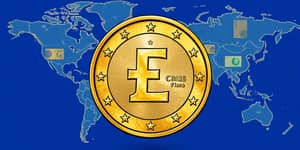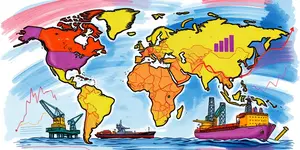
Investing beyond your borders has never been more accessible or essential. With international ETFs, you can unlock opportunities across the globe without the usual complexity.
International ETFs (Exchange Traded Funds) are pooled investment vehicles that trade on domestic stock exchanges yet own shares of foreign stocks, bonds, or a mix of global assets. They provide investors with instant exposure to multiple markets through a single security.
These funds simplify the complexities of foreign investing by eliminating direct dealings with overseas brokers, currency conversions, and disparate regulatory requirements.
At their core, international ETFs democratize access to markets that once required specialized expertise or sizable capital outlays.
International ETFs offer investors diverse exposure to multiple economies, mitigating the risk of domestic downturns impacting the entire portfolio.
By reallocating a portion of your holdings overseas, you tap into industries and growth trends that may not be well represented in your home market.
Despite underlying assets trading around the world, international ETFs list on major domestic exchanges, allowing investors to trade during local market hours.
Prices of these ETFs may deviate slightly from their net asset value (NAV) due to time zone mismatches between the listing exchange and the markets where underlying securities trade.
However, authorized participants help keep these deviations in check by arbitraging price differences, restoring alignment with the ETF’s NAV.
Transparency is another hallmark: most ETFs publish their holdings daily, offering clear visibility into regional allocations and sector exposures.
Leading investment firms commonly recommend allocating a significant slice of international exposure within a balanced portfolio:
For example, Vanguard suggests:
These benchmarks help investors structure portfolios that harness global growth while maintaining a measured risk profile.
Investors should remain mindful of several unique factors when venturing overseas:
• Currency Fluctuations: Exchange rate movements can amplify or erode returns independent of market performance.
• Geopolitical Tensions: Political events, regulatory changes, or trade disputes may impact regional markets.
• Market Volatility: Emerging markets often experience sharper swings than developed economies.
• Tracking Errors: Small gaps between ETF performance and its benchmark index can occur due to fees, transaction costs, and timing differences.
International ETFs are ideal for:
• Investors seeking long-term growth opportunities abroad.
• Those looking to reduce portfolio concentration in a single domestic market.
• Individuals comfortable with moderate to elevated risk in pursuit of higher returns.
• Strategic allocators who want to access sectors or regions unavailable at home.
Recent years have seen a surge in demand for international ETFs as investors recognize the potential for diverse income streams and growth beyond their home markets.
Particularly, funds targeting AI, biotech, and renewable energy sectors have attracted significant inflows, reflecting global interest in technology-led transitions.
When evaluating performance, compare 3-, 5-, and 10-year return histories alongside expense ratios to gauge relative risk and reward.
International ETFs represent a powerful tool for constructing truly diversified portfolios. By offering cost-efficient access to global markets, they empower investors to seize growth opportunities and spread risk across continents.
However, successful use requires an understanding of specific risks—currency shifts, geopolitical events, and tracking anomalies—that accompany foreign investments.
With disciplined research, prudent allocation, and regular rebalancing, international ETFs can serve as a cornerstone of a resilient, growth-oriented investment strategy.
References













